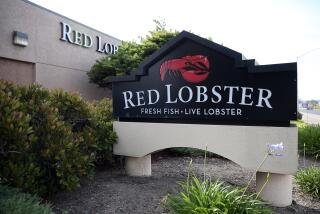Coast Restructures to Hike Capital, Triggering Major Loss for the Year
- Share via
Coast Savings Financial on Monday disclosed a broad financial restructuring that will boost the Los Angeles thrift’s capital by about $200 million but result in a big loss for the third quarter and for the year.
The moves by the parent of Coast Savings & Loan were a quick reaction to the toughened capital standards taking effect under federal savings and loan bailout legislation signed by President Bush last month. The new standards require thrifts to put more cash at risk, the goal being to provide a bigger cushion against losses and to cut down on the kind of speculative investments and abuses that led to the government’s massive rescue of the savings and loan industry.
Coast is one of several large California thrifts--Calfed Inc. and Glenfed Inc. are among the others--under pressure to raise capital levels because of the tougher new regulations. The move by Coast, the nation’s 14th-largest thrift, is the most extensive announced by a major savings and loan firm since the bailout bill went into effect.
Coast’s restructuring and related moves will result in one-time charges of $66 million against its earnings. That amount includes $20 million that is being added to its loan-loss reserves because Coast modified its formula for estimating those reserves.
Coast did not project the size of net losses it expects as a result of the charges to earnings. But the amount of the third-quarter charge far exceeds the $9.3 million in profit the thrift posted in the third quarter of 1988 and the $41.7 million it earned all of last year. In the first six months of this year, Coast earned $11.8 million.
Coast’s restructuring has three basic parts. It plans to raise $150 million by selling preferred stock that is convertible into common stock. It also plans to swap common stock for $52 million in convertible bonds.
In addition, Coast will wipe out $242 million worth of intangible assets, called goodwill, from its balance sheet through various accounting adjustments. Under the bailout law, thrifts must phase out goodwill as an element of their capital. Coast is restating its earnings going back to 1981 as a result of the change. (The profit figures above reflect this restatement.)
Better Position to Buy
Although Coast will post a loss, the moves will substantially strengthen its capital position. Financial analysts projected that Coast’s percentage of tangible capital to assets is expected to jump to 3.04% from 1.79% now, meaning that Coast will have more than $3 cash for every $100 it has loaned out.
Under the new federal guidelines, a thrift must have at least $1.50 in cash for every $100 in loans by 1991 and at least $3 in cash for every $100 in loans by 1995.
Coast Chairman Ray Martin acknowledged in a telephone interview Monday that one reason for strengthening Coast’s capital position is to put the company in a better position to buy thrifts that become available in the wake of the bailout.
“If you are one of the best capitalized thrifts, you are in a position to take advantage of the consolidation that will take place,” Martin said.
Coast is one of more than a dozen institutions, for example, that has shown interest in Gibraltar Savings, a big thrift now based in Simi Valley, that is operating under supervision of federal regulators.
Coast’s stock fell $1.25 on Monday to $18.375 a share in New York Stock Exchange composite trading. Peter Treadway, a thrift analyst for the investment firm of Smith Barney, Harris Upham in New York speculated that the stock fell because investors were surprised by the $20-million addition to the loan-loss reserves.
More to Read
Inside the business of entertainment
The Wide Shot brings you news, analysis and insights on everything from streaming wars to production — and what it all means for the future.
You may occasionally receive promotional content from the Los Angeles Times.










